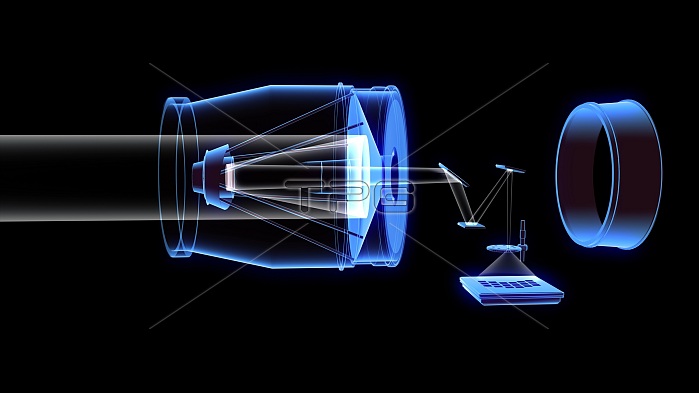
Illustration of the Wild Field Instrument (WFI), one of the cameras in NASA's Wide Field Infrared Survey Telescope (WFIRST). WFI will take pictures with the same resolution as the Hubble Space telescope but covering an area 100 times larger. Light enters through WFIRST's 2.4-metre aperture (left) and is reflected and focused by the curved main mirror. This light is reflected and focused once more by the secondary mirror. Additional elements focus the beam even more before it passes through the filter wheel. This wheel has a variety of filters that allow different wavelengths of light to pass through. It spins from one to another depending on what the researcher is looking for. Finally, the focused and filtered light reaches the focal plane, where it creates an image on the detectors. These detectors use the photoelectric effect to convert photons into an electrical signal that is then then decoded into an image. In WFIRST's case, there are 18 detectors, allowing it to create 300-million-pixel images of large patches of the sky. The large number of detectors and pixels gives WFIRST its wide field of view. The size of the mirror and the precision of its optics gives WFIRST its fine imaging. This combination of image size and detail has never been possible on a space-based telescope before.
| px | px | dpi | = | cm | x | cm | = | MB |
Details
Creative#:
TOP25373263
Source:
達志影像
Authorization Type:
RM
Release Information:
須由TPG 完整授權
Model Release:
N/A
Property Release:
N/A
Right to Privacy:
No
Same folder images:

 Loading
Loading